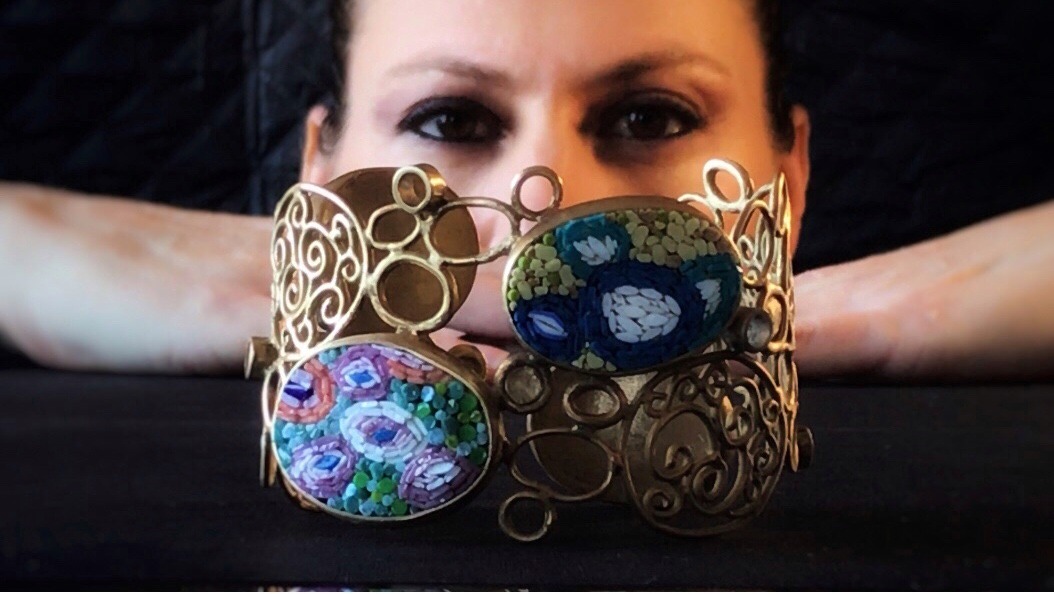What is micromosaic?
Each profession has its own story that becomes magical when it is told and revealed.
To appreciate and understand a micromosaic jewel you need to know how it is born and how it
is made.
Shaping the material, obtaining tiles of different sizes, colors and shapes is the magic of
micromosaic.
The 1700s was a period of great ferment for Rome, where with the beginning of the work for the
decoration of St. Peter’s Basilica, Alessio Mattioli began to produce enamels with a large
chromatic scale, creating 15,300 different colors.
This production started exclusively for the decoration of the basilica evolves to become a very
refined technique of reproduction of pictorial works. which subject to deterioration, were
reproduced in micromosaic, where the very small tesserae were able to faithfully reproduce the
picture.
This is how minute mosaics or “yarn mosaics” were born, a term that derives from the technique
that allows the production of very small tesserae (even smaller than a millimeter) used precisely
for the realization of these mosaics.
A magnifying glass and a hawk view are absolutely necessary to make these mosaics.
As the alchemist transforms the material, the mosaicist transforms the molten mass into
tesserae. The beauty of this technique lies both in the possibility of mixing the various base
colors to create infinite varieties and ranges of colors, and in being able to create the basic
shape (rectangular square, petal drop, etc.) according to the design to be created.
One card can never be the same as the other.
If this post has aroused at least a bit of curiosity, you can subscribe to the newsletters where
you will be updated on everything related to the world of micromosaic and armochromatic
jewelery. You will also have the opportunity to get a preview of the new collections, special
discounts dedicated to those who, like you, have decided to stay up to date on the Giowels
world.



